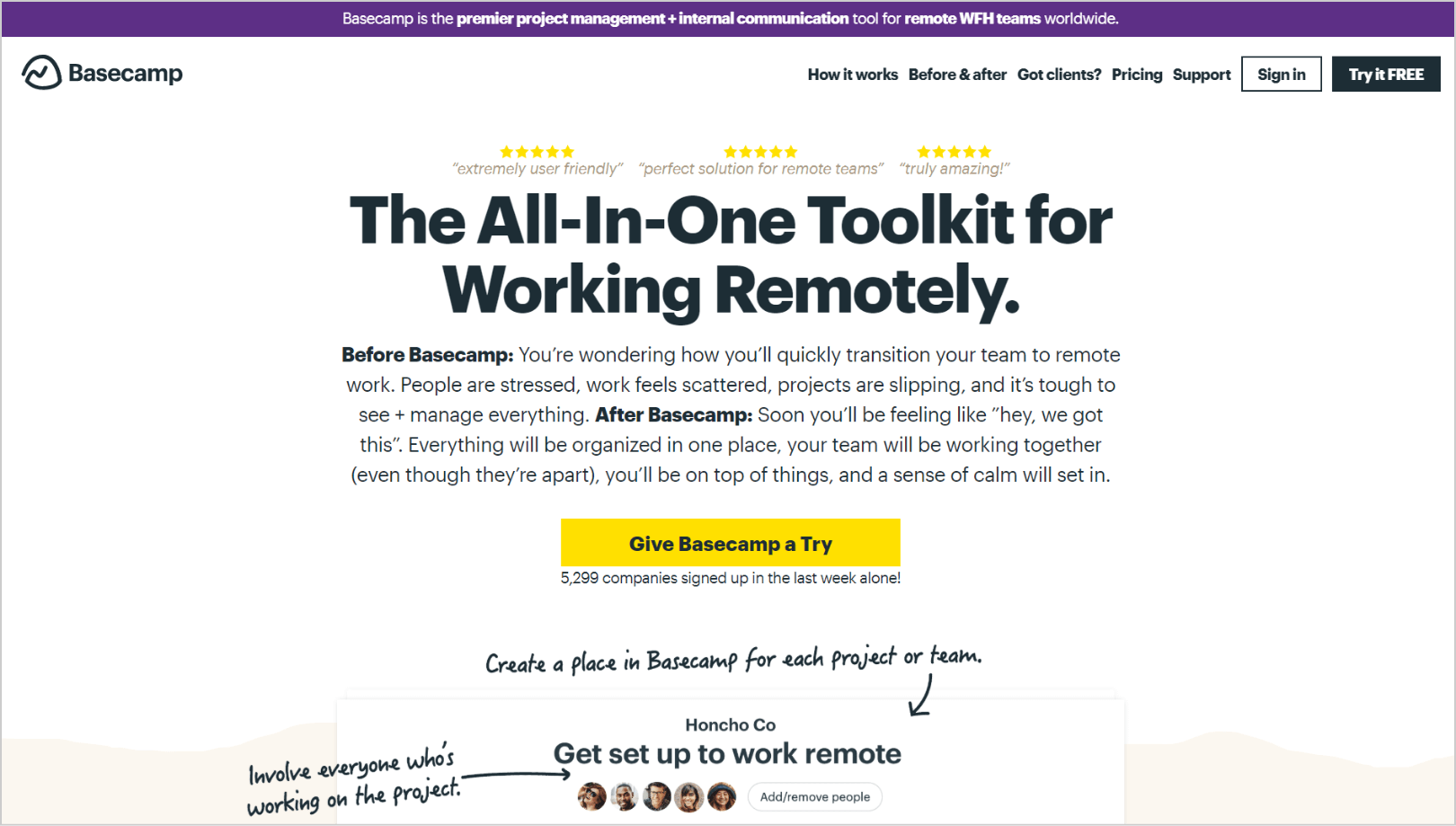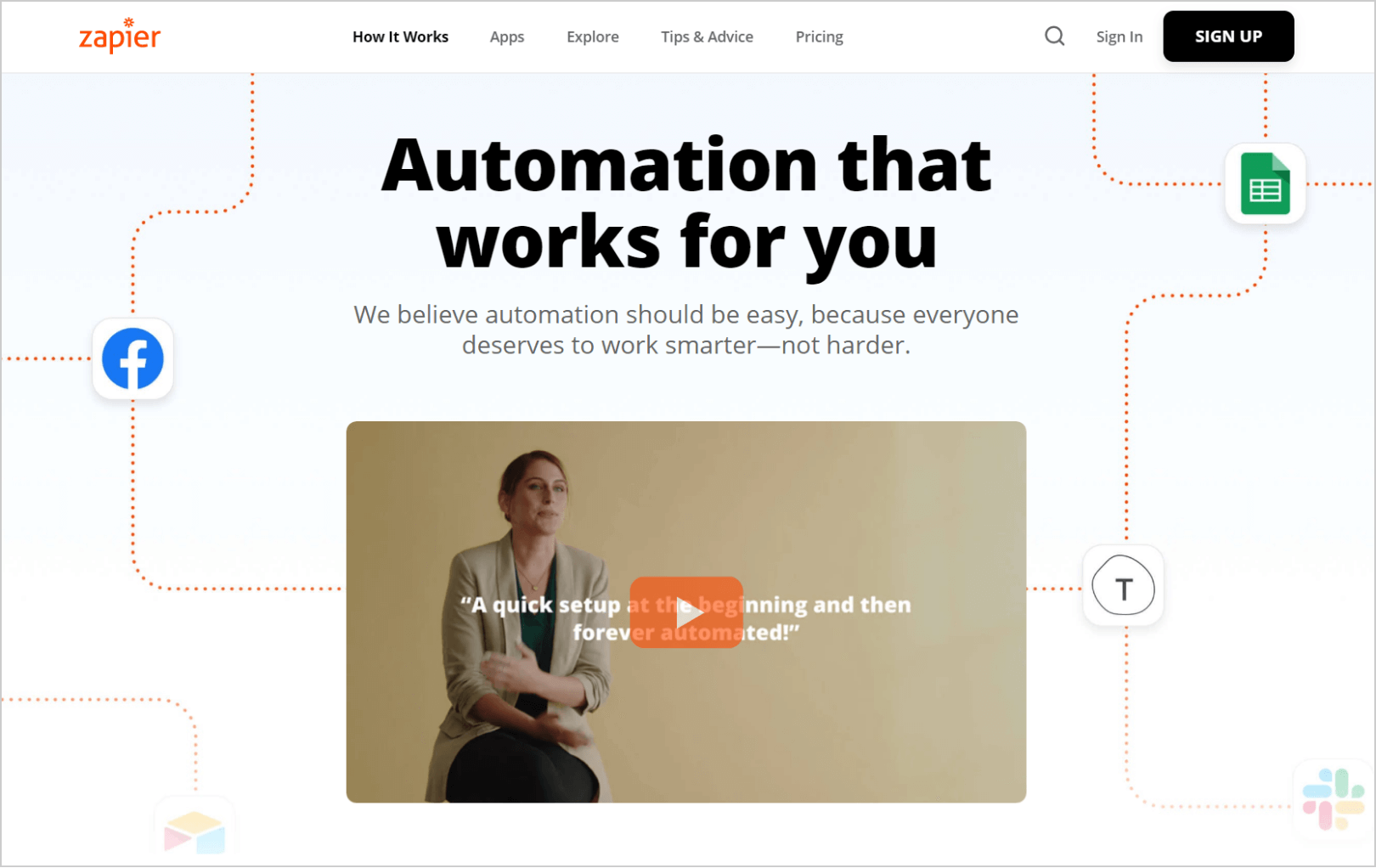Remote working is the present and future of work. At least, for most of the tech and office jobs out there. It’s not a novel idea either, for example, countries like Sweden have been innovative and doing it for years now.
треWith the developments surrounding us, the prehistoric 9-5 approach is being slowly abandoned. People don’t have to travel to work anymore, and employees love the flexibility of remote jobs.
Even before the COVID-19 outbreak, a distributed team was becoming a standardized practice. As reported by OwlLabs, in the U.S alone, people work remotely full-time 66% more than the global average.
With the ongoing 2020 pandemic, lots of companies must reevaluate their approach and adapt to the current situation.
In these challenging times, at DevriX, as a company of 50+ employees that already has a successful remote infrastructure in place, we’ve decided to provide enterprises with a remote working guide that can help them stay afloat. Let’s begin!
Remote Working Myths

To implement remote working successfully, first, you need to debunk the myths
Remote work, especially if you’re running a large team, can be an incredibly demanding task. But, when executed correctly, it can become an efficient way to move things forward. To enable the entire team to perform on the highest level, first, let’s debunk the biggest myths that surround distributed teams. The following are just some of the most common myths regarding remote working:
Lack of Communication
One of the biggest myths is that remote work often leads to diminished, or barely any communication at all from the employees. This isn’t true. A team can communicate well, even if they aren’t in the same building, mostly by using video, audio, and chat communication tools.
Furthermore, with time tracking, cloud memory spaces, and additional working software, the interaction between teams working from different locations does not have to be a challenge.
Low Productivity
There will always be those that consider remote work as lounging in front of the laptop. However, research shows that 65% of employees feel more productive working from their homes.
Some open-door office arrangements can even result in distracting face-to-face discussions and meetings and a 70% decrease in collaboration and productivity.
The bottom line is that productivity comes down to communication and accountability. With defined expectations and responsibility for the work, everything will run smoothly.
Diminished Team Culture
A company’s culture consists of its mission, employee and team interactions, and shared values. When a team works towards a goal, no distance or remote location should put a stop to the work culture.
Of course, working remotely means no watercooler chats. But, with the right activities, even remote social moments can strengthen team culture. As a matter of fact, because of the growing popularity of remote work, now is the time to redefine your company’s work culture.
How Remote Teams Work?
Remote work allows teams to work from home with equal intensity as they would in the office. However, optimizing the team for comprehensive remote work processes takes some effort, which is why, at DevriX, we are working closely with each team member to create an efficient distributed process.
Our CEO Mario Peshev plays a key role in establishing consistent communication and collaboration, despite the location. According to Mario, to make remote teams work, enterprises need to pay attention to the following aspects:
Communication – It’s one of the main priorities for both remote employees and management. We sync several times per day with each of our employees. The devs update their code in GitHub or Bitbucket, and marketers update their spreadsheets and documents.
Each of our employees is a quick communicator so that we can avoid missing deadlines and process regression, even when out of the office. At DevriX, we’re using two major communication channels, Slack for daily syncs, and Asana for team assignments.
Experience – Each of our new hires has at least 2-3 years of remote working experience. In most cases, experienced employees are more aware of remote work requirements. However, everyone still needs management and supervision.
Company Culture – It’s perhaps the biggest challenge in remote working environments. Communication, collaboration, and meet-ups all play a vital role here. But, a team consists of different personalities, and not everyone can have the same extroverted social elements that fit right in.
That is why we harness company culture for our remote members. We have regular offtopic Slack chats, Monday Kick-Offs, and one-on-one non-business conversations.
Why Companies Implement Remote Work?

More and more enterprises are choosing remote work because of the technological advantages and cost savings.
Emergencies are not the only occasion when enterprises turn to distribute their work across the world. There are lots of benefits and opportunities that made remote work attractive in the first place:
- Big Savings: According to a recent report by PGi, by hiring remote employees, companies can save up to $10,000 yearly for each of them. When hiring a remote employee, companies don’t have to pay considerable office and equipment expenses.
- Efficiency: As stated in an Airtasker study, remote employees worked at least 1.4 days more each month or 16.8 days per each year. The likelihood for office employees to avoid working when their screen time is tracked is 17% higher than with remote employees.
- Work-Life Balance: Remote work allows employees to take greater control over their day. They have time to work on their tasks, see their family, set a doctors’ appointment, and yet, everything feels like a typical working day.
- Global Talent: Remote means that you can choose from global worldwide talent. It doesn’t matter where your business location is. Even if potential employees are from another state, if they can work on their laptops, they don’t have to move to your physical location.
- Sustainability: Now, we need to take care of our planet more than ever. That’s what a remote working plan helps us achieve. As stated in a FlexJobs report on the environmental benefits from remote work, if employees work remotely for at least half of their workday, it would result in substantial gas, oil, and driven miles savings.
The Cons and Challenges of Remote Working
As you can see, remote work comes with many benefits. However, you must be aware that it brings its own set of challenges as well, such as:
- Distractions: Remote work can be distracting. This is especially true when employees work from home, surrounded by their families or in a loud coffee shop.
- Communication Issues: Problems arise as a result of unclear project scopes and weak communication.
- Discipline Problems: In lots of cases, remote employees lack the critical in-office discipline because they’re far away from the company’s physical location.
- Tech Issues: Remote working is dependent on technology. So, if some issues happen with the communication tools, teams can lose either several minutes or hours in the workday.
- Management Obstacles: Monitoring teams of over 50 remote employees is quite complicated. You need a record of each one’s working hours, days off, payrolls, and available time of work. Everything won’t go as smoothly as you might expect.
Required Traits of a Remote Employee

There are a few essential traits and skills that a remote employee must haveAs a team that has worked remotely for years, we appreciate the advantages that remote work brings. But, we’re experienced enough to make sure that being remote work does not affect our productivity and work quality.
From our experience, the following are the critical traits of quality and productive remote employee that you need to look for:
- Communicativeness: A responsible remote employee touches base regularly. He/she always provides responses and updates for the projects and addresses each concern that the team has.
- Thoroughness: At DevriX, we’re incredibly detailed, and it’s one of our rules that we swear by. We insist on thorough reports and conversations. We aim to provide as much context as possible so everyone can understand and respond in the right manner.
- Trustworthiness: We can’t stress the importance of this enough. Working from home does not mean that the employee should “Netflix and chill”. Work is work, regardless of the physical location. When you’re at home, especially with your family, getting distracted is easy. That is why project deadlines are important, and proper management is crucial.
Maintain a Goal-Focused Approach

Goals and deliverables are the main guideline for remote working success.
One of the best ways to ensure that your employees will stay focused and productive is to define the right goals in advance. With clear-cut goals and defined deliverables, remote teams can achieve greater success.
Start with each employee’s personal and professional goals. Will the deliverables focus on each individual, or they’re for the entire team?
Each weekly, monthly, quarterly, and even yearly deliverable must be realistic and achievable. When the outcome is clear, you can keep the team focused on the progress of each of your projects. Figure out the right metrics for each remote employee and decide on the outcomes that illustrate the project/task outcome.
Implementing the S.M.A.R.T. goals approach is a proven method to keeping everyone on track:
- Specific: What is the particular outcome that each employee must attain?
- Measurable: Is each goal measurable? And how can you measure it?
- Achievable: Are the goals set for each employee realistic and achievable? ?
- Relevant: Is the goal relevant for the employee’s job? You wouldn’t ask a programmer to take over article writing, wouldn’t you?
- Time-Bound: Are the due dates and deadlines realistic? Can the goals set be met during the time allotted?
Establish the Rules of Working

Make sure that you establish clear remote work policies in advance.
If you haven’t established any rules so far, now is the time to do it, even if the remote situation is temporary. In these moments, it is more important than ever before for everyone to understand the situation and the rules when working remotely.
Set Expectations
Realistic expectations are critical for the employee’s productivity and the enterprise’s success. Define the following:
- Working Hours: When will the workday begin, and when will it end? Set a normal working time so that nobody loses track of time and overworks.
- Communication: When reaching out to team members, what is the response time? Should they answer immediately or by the end of the day? , ? Also, how will communication be conducted? Through email, or programs like Slack, Zoom or Skype?
- Availability: Set out a schedule and record each employees’ availability. Allow for unexpected situations such as doctor appointments or other emergencies. Decide how the availability will be managed, via email or mutual calendar.
Conduct Regular Team Reviews
Team reports and reviews are of vital importance when managing a remote team. Currently, at DevriX, we conduct the following team check-in and review meetings:
- Weekly Kick-offs: Each week, we have kick-off chats to discuss progress and priorities. We also conduct separate 30-minute meetings for both the development and marketing teams.
- Weekly Reports: Each week, our employees sync their progress, project accomplishments, and priorities.
- Daily Stand-Ups: Each workday, employees share a list of tasks and projects for the day. With that, we can keep track of productivity and sync with them for priorities and deadlines.
Using the Right Tools
When working from home, workplace interactions are not as easy as in the office. That is why you need to utilize tools to your advantage to create a virtual office environment.
Recently, we’ve updated our roundup post “13 Remote Companies Share Their Favorite Collaboration Tools”. The tools mentioned were:
- GSuite – A SaaS that combines each tool created by Google for enterprises, including Gmail, Docs, Sheets, Slides, Calendar, Drive, Sites, and more.
- Slack – A workplace instant messaging software that supports plenty of add-ins and various tools. There are two ways to message on Slack, either in a group chat or via direct messages with each employee.
- Asana – A SaaS developed for improving team collaboration and project management. With Asana, you can manage each project and task from one place.
- Zoom – With this software, you can keep in touch with your colleagues as you would in person.
- Airtable – Airtable can be used for storing data in a spreadsheet in an intuitive and visually-appealing manner. It’s a tool that can act as a database for CRM, task management, and project tracking software.

Keeping track of company data is essential, even more, when running a remote organization.
- SaaS BPM – A recurring task engine that provides the basis for all productivity and collaboration set of tools at your disposal. With a simple checklist, employees would never skip or forget those recurring tasks that their working day revolves around.
- Telegram – An instant messaging and voice platform. It can be installed on either Android, iOS, Windows, macOS, or Linux. Employees can use it to send messages and/or media files of any type.
- HelloSign – An online tool that allows employees to sign documents with legally-effective e-signatures. Users can also upload documents through a drag and drop interface.

- Evernote – Note-taking software for better task organizing, management, and archiving.
- WhatsApp – A messaging application for sending text messages and media files.
- Skype – Software for instant video, voice and text communication. The users can also send any type of media files.
- Basecamp – A project management software that can be used in desktop browsers and smartphones. It provides you with tools for scheduling, creating, and uploading documents, as well as messaging employees.

“Office is Not Required” stands in Basecamp’s motto. It’s a tool that provides a company with everything the team needs for remote working.
- Facebook Workplace – A collaboration tool that allows employees to interact in an “Internal Facebook” space.
Apart from the tools above, we want to mention a few other tools that you can use for your remote work management:
- HubSpot – An inbound marketing and sales tool that is used for attracting and converting leads.

Your enterprise could always need a CRM that replaces the in-person experience when engaging with a lead and potential client.
- Dropbox – A cloud service where you can store your files and keep them available in the cloud whenever you need them.
- Hubstaff – A time tracking tool that enables your management to monitor each employee’s activities within working hours.

Time tracking is pivotal in remote work environment, to show you exactly if remote employees are engaged with the task or not.
- Grammarly – A tool that helps content writers to correct their text for better grammar and spelling.
- Zapier – An automation tool that allows you to integrate each app and software, and schedule tasks without having to repeat them manually.

Automation and app integration is essential for a quick transition to a remote working environment and better productivity.
Wrapping Up
This guide is for every business that intends to make progress through these difficult times. At the heart of the matter, remote working is a crucial shift needed as a result of the COVID-19 pandemic.
At this point, leaving the traditional 9-5 office job behind for a remote one will benefit everyone and keep t business operations in place. Remote working is the path of the future as we all must ensure both safety and work efficiency for our employees and clients.




